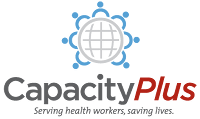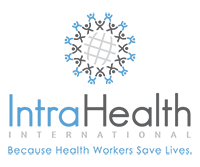Hiring
The Use of Special and Emergency Hiring Approaches in Health Systems
Special and emergency hiring programs entail the use of processes and mechanisms that are outside of the primary, nationally institutionalized human resource frameworks. Specifically, we sought to assess whether these approaches avert some of the challenges that undercut optimal deployment, long-term retention, and the rational assignment of transfers. Do efforts outside of the “regular” system bypass the P&T challenges of the “normal” system? Why? [from introduction]
- 567 reads
Rural Medical Education Guidebook
The Guidebook aims to be a useful resource amongst rural colleagues - to cross-fertilise experiences and build a stronger and more vibrant community of rural health care practitioners and medical educators. [adapted from preface]
- 668 reads
Employment Integration of Nursing Graduates: Evaluation of a Provincial Policy Strategy Nursing Graduate Guarantee 2008-2009
This report presents the results of an evaluation of the Ontario provincial strategy for hiring new graduates, the Nursing Graduate Guarantee, for the year 2008-2009. [from summary]
- 5963 reads
Kenya Emergency Hiring Plan: Results from a Rapid Workforce Expansion Strategy
The author outlines the results of the Emergency Hiring Plan which was designed to quickly hire and train large numbers of qualified health workers in Kenya and deploy them where they are most needed. [adapted from author]
- 6191 reads
Restructuring the Additional Duty Hours Allowance: Job Descriptions for Allied Health Staff - Part I
This document details the specific hiring criteria for allied health staff as established by the Health Services division of the Ghana Ministry of Health. Primary areas of interest to HRH facilitators include positions in the fields of optometry, dentistry, oral health and laboratory staff.
- 2458 reads
Restructuring the Additional Duty Hours Allowance: Job Descriptions for Allied Health Staff - Part II
This document details the specific hiring criteria for allied health staff as established by the Health Services division of the Ghana Ministry of Health. Primary areas of interest to HRH facilitators include positions in the fields of physiotherapy, occupational therapy and disease control.
- 2368 reads
Restructuring the Additional Duty Hours Allowance: Job Descriptions for Administrative and Support Staff
This document details the specific hiring criteria for administrative and support staff as established by the Health Services division of the Ghana Ministry of Health.
- 1912 reads
Restructuring the Additional Duty Hours Allowance: Job Descriptions for Directors
This document details the specific hiring criteria for directors as established by the Health Services division of the Ghana Ministry of Health.
- 2004 reads
Restructuring the Additional Duty Hours Allowance: Job Descriptions for Clinical, Nursing & Midwifery and Pharmacy Staff
This document details the specific hiring criteria for clinical, nursing & midwifery and pharmacy staff as established by the Health Services division of the Ghana Ministry of Health.
- 5064 reads
Job Descriptions for Blood Donor Organizers
This document details the specific hiring criteria for blood donor organizers as established by the Health Services division of the Ghana Ministry of Health.
- 1979 reads
What You Need to Know about Senior Employment Opportunities and Contracts
For employment contracts not covered by collective agreements, individual nurses must be able to negotiate salaries and conditions of employment commensurate with their position and job functions. The purpose of these guidelines is to assist nurses in applying for senior positions and includes a review of the position, the application processes in its broader context and a clarification of both individual and collective employment contracts and how these relate to senior positions. [from preface]
- 2052 reads
Family Planning Manager's Handbook
The Family Planning Manager’s Handbook is a standard text in management training courses around the world and has received wide recognition as a practical guide for managers of health and family planning programs. [publisher’s description]
- 4867 reads
Beyond the Clinic Walls
This book contains a series of case studies which depict the management issues a family planning organization faces in designing and implementing a new community-based distribution (CBD) program for contraceptives. The cases, which take place in a fictional country Momonboro, are based on an actual program initiated in an African country, and reflect the problems and successes which that program experienced.
- 2593 reads
Merchants of Medical Care: Recruiting Agencies in the Global Health Care Chain
Shortages of skilled health workers occur in most countries in the world, and most significantly in countries where education levels are relatively high. Migration has tended to be at some cost to relatively poor countries where the costs of production are considerable and losses are not compensated. The costs of global mobility are thus unevenly borne by the poorer source countries and the benefits are concentrated in the recipient countries. Since migration cannot be ended, and source countries have only limited scope for substantial policy change that will improve the number and status of health workers in the home countries, the onus has increasingly shifted towards the role of recipient countries in ensuring that, if migration is to continue, then it be more equitable and that there be adequate compensation for losses incurred in source countries.
- 4189 reads
Functional Job Analysis: Guidelines for Task Analysis and Job Design
This guide is designed for managers, supervisors, educators, planners, and evaluators. Its purpose is to discuss ways to improve decisions that affect how human resources are used to provide health services. Improved decisions require up-to-date and detailed information about three components of human resources for health: (1) the workforce, (2) the work performed and (3) the work settings. This guide discusses how to establish an information system that links these three components to form a unified model of human resources planning, training, and utilization. [from overview]
- 53031 reads
HRM Resource Kit
This toolkit includes a collection of HRM resources and links assembled for the Global Health 2005 conference. Most of the resources are in Microsoft Word format and provide guidance on how to develop a variety of HRM documents or processes. Topics covered include supervision, hiring and recruitment, HR policies, and HIV Workplace Programs and training. [publisher’s description]
- 12629 reads
Determining Skill Mix: Lessons from an International Review
As many countries initiate health sector reform-led cost containment and quality improvement measures, there is an increasing need for health care organisations to identify the most appropriate mix of staff. This paper examines why achieving the right mix is so important, critiques the main approaches used in determining personnel mix in health care, and discusses the main lessons from research in this area.
- 4014 reads




